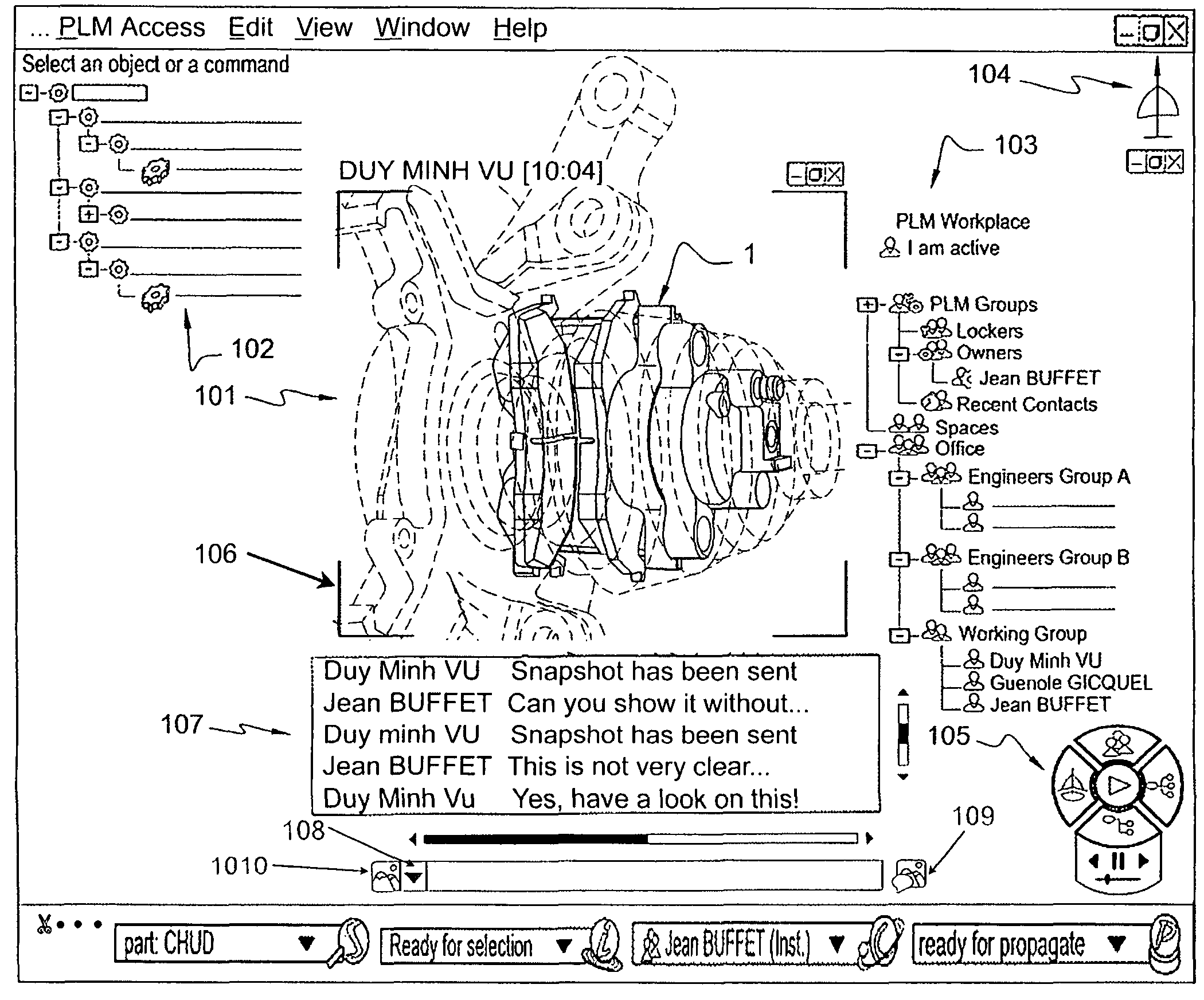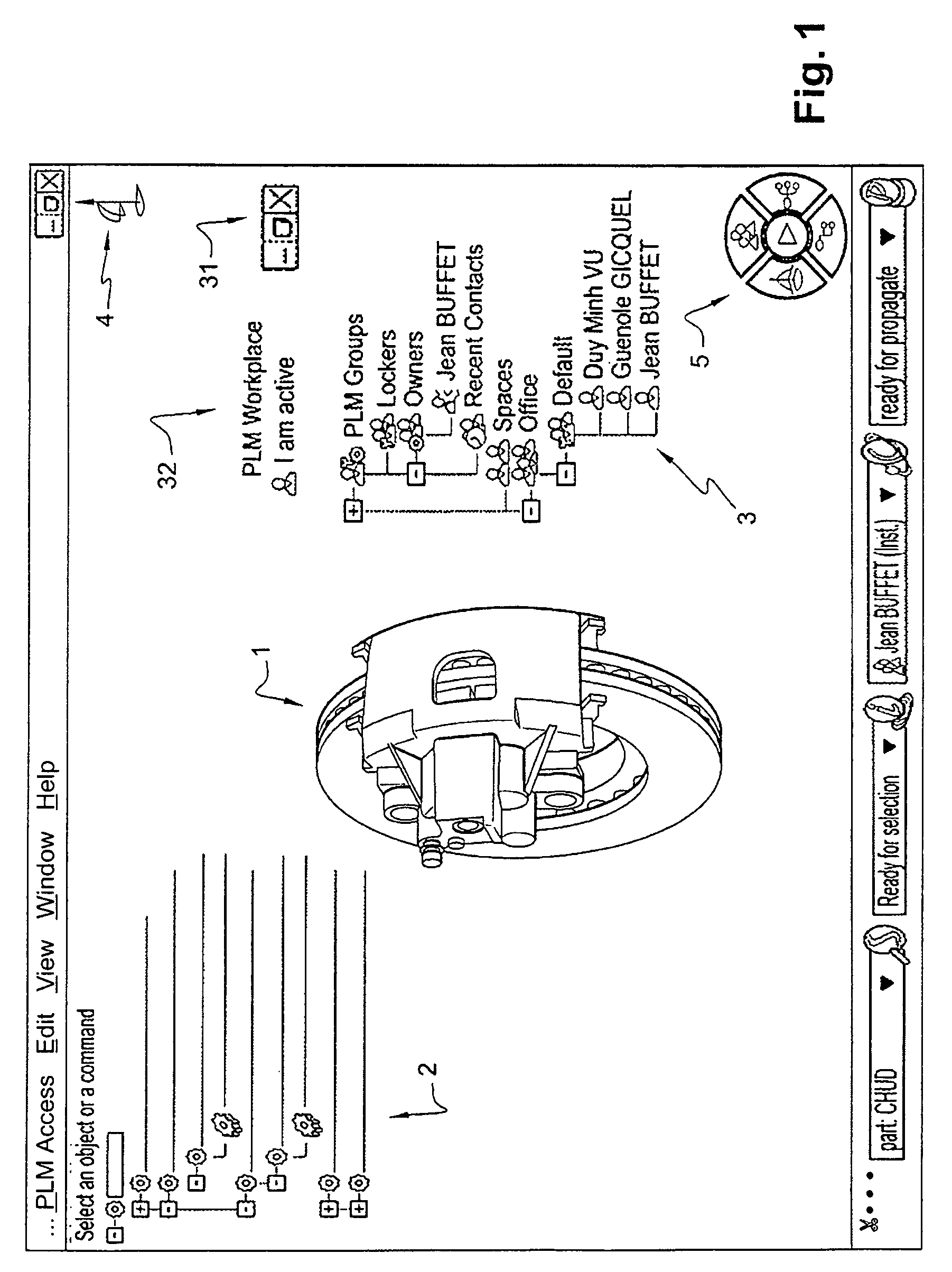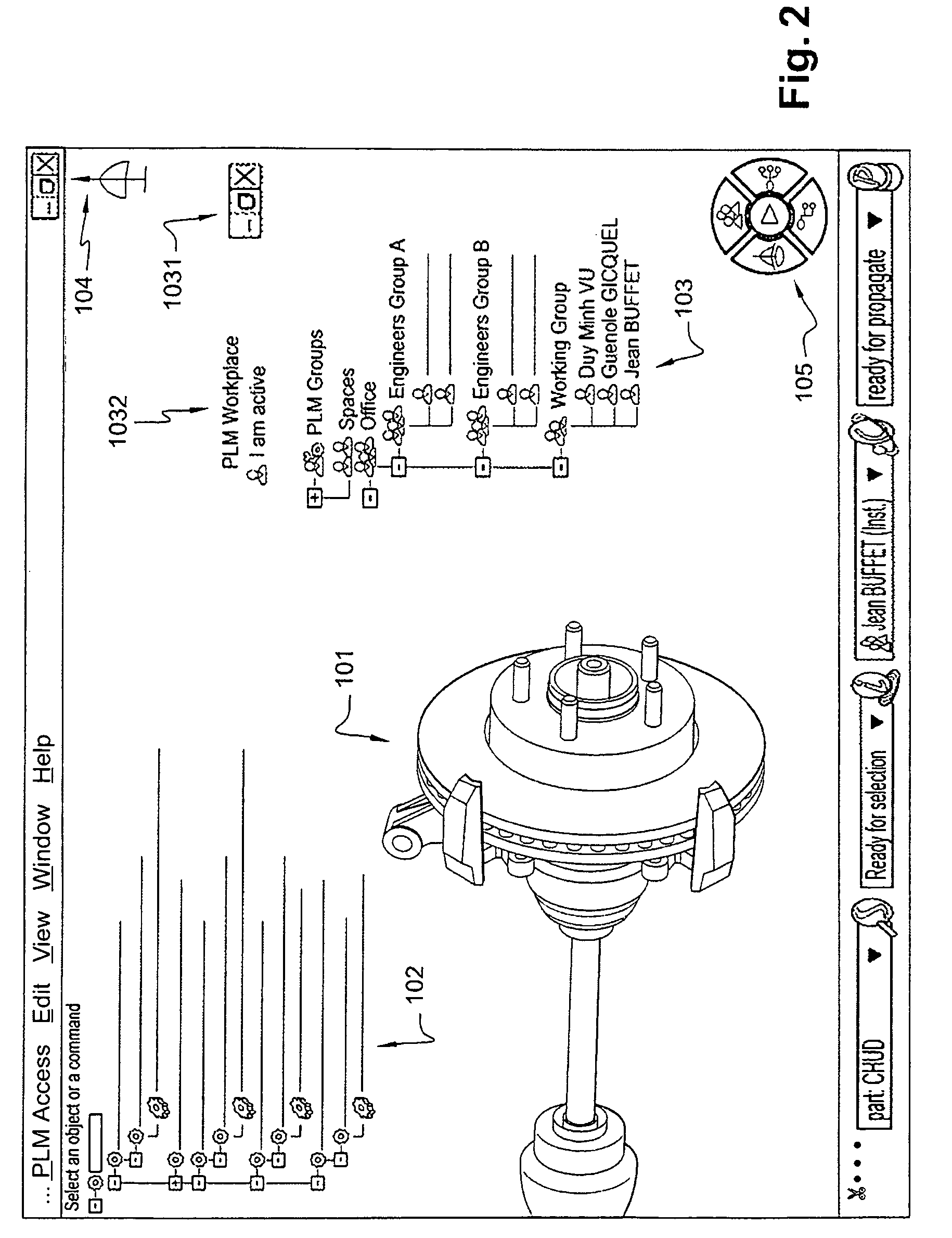Computerized collaborative work
a collaborative work and computer technology, applied in the field of computerized collaborative work, can solve the problems of not having a collaborative workspace for graphical objects, sharing information between users is difficult, and users can have a difficult mental operation
- Summary
- Abstract
- Description
- Claims
- Application Information
AI Technical Summary
Problems solved by technology
Method used
Image
Examples
Embodiment Construction
[0064]A description of example embodiments of the invention follows.
[0065]We will describe an example scenario of a collaborative work in relation to FIGS. 1-22 for two users called respectively Jean Buffet and Duy Minh Vu.
[0066]Jean and Duy work on a PLM computer application such as the PLM solution provided by Dassault Systèmes under the trademarks CATIA, ENOVIA and DELMIA. Jean and Duy are more particularly involved in the design of spare parts of an assembly. Both Jean and Duy work in a respective authoring environment on a respective computer having a GUI and any usual related equipment such as a keyboard and graphical pointer device such as a mouse. Their computers are connected to a same network. The figures illustrate the situation in which Jean and Duy are in course of designing respective spare parts which are related and therefore want to go into a collaborative work.
[0067]As the type of elements displayed in the respective workspaces of Duy and Jean as well as their func...
PUM
 Login to View More
Login to View More Abstract
Description
Claims
Application Information
 Login to View More
Login to View More - R&D
- Intellectual Property
- Life Sciences
- Materials
- Tech Scout
- Unparalleled Data Quality
- Higher Quality Content
- 60% Fewer Hallucinations
Browse by: Latest US Patents, China's latest patents, Technical Efficacy Thesaurus, Application Domain, Technology Topic, Popular Technical Reports.
© 2025 PatSnap. All rights reserved.Legal|Privacy policy|Modern Slavery Act Transparency Statement|Sitemap|About US| Contact US: help@patsnap.com



